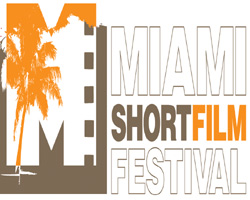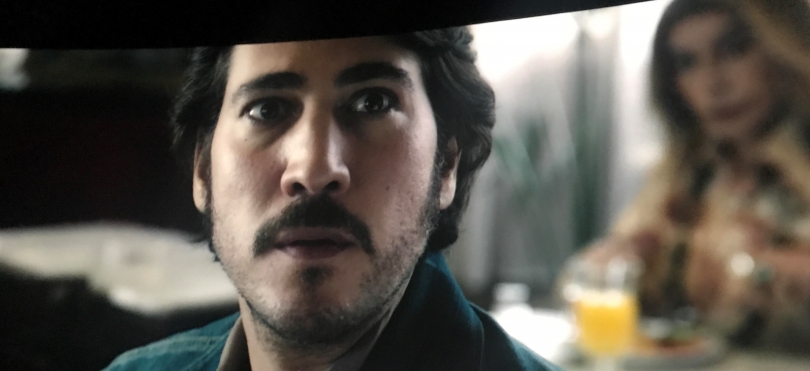|
|
||
|
Pro Tools
FILMFESTIVALS | 24/7 world wide coverageWelcome ! Enjoy the best of both worlds: Film & Festival News, exploring the best of the film festivals community. Launched in 1995, relentlessly connecting films to festivals, documenting and promoting festivals worldwide. Sorry for the interruption, we needed to correct and upgrade some modules. Working on a new website. For collaboration, editorial contributions, or publicity, please send us an email here. You need for put your full detail information if you want to be considered seriously. Thanks for understanding. User login |
Rafa Russo’s ‘The Year of Fury’ Deftly Interweaves Latin American Politics to the Forefront
“The Year of Fury,’ Rafa Russo’s film set in Uruguay during the early 1970s, maintains its cool sensibilities by its knowing and interesting set of characters. It rolls and flows fluidly by Russo’s lyrical direction – always mindful that the heart of the story rests in the importance of how creative writers must maintain their poise in the face of a pending dictatorship. The motion picture will surely be embraced by an even broader audience now that it debuted at the 36th Warsaw Film Festival. ‘The Year of Fury’ exudes unique poignancy and heart -- all splashed together by a heavy crash course of Latin American history. In the '60s and '70s, populist, nationalist, and socialist movements emerged throughout various Latin America countries. This was a time when U.S. national security strategists and their Latin American counterparts began to regard large sectors of these societies as “subversive.” Operation Condor, as cited by Global Policy, allowed Latin American militaries “to put into practice a key strategic – and violent – concept defined by ideological frontiers.” In training centers like the Army School of the Americas in Panama, “officials learned how to hunt down, interrogate, and often brutalize suspected dissidents – not necessarily for their political violence, but their political ideas. In the second stage, cross-border operations enabled officers to detain or make dissidents disappear from view. Assassinations were [later] carried out against subversives.” These historical elements are deftly interwoven within Russo’s ‘The Year of Fury’ – all told with his special flourish as he is a seasoned writer. Rafa Russo’s well-acted, well-written, well-shot, and thoughtfully executed, “The Year of Fury,” depicts the life and travails of two writers of a television program in Uruguay - both of whom are affected by pressures of the state a year before the 1973 military coup. “My parents are from Argentina. [The film] involves a couple of writers who have to struggle to maintain their integrity because they’re under pressure to tone down their writings – because of the government, and a dictatorship coming to the country. I hope the film will resonate with audiences from all over the world. I don’t think that the historiography and milieu of Uruguay is very different from other countries that have suffered dictatorships, but what I hope is distinctive are the angles and points of view the story is told from," says Russo who was born in Spain. While the narrative is told sensitively, Russo's emphasis to having the film so well-researched makes it a cut above. Take for instance, the subject of Tupas, the left wing guerilla organization that hardly ever gets a mention in world history classes in the U.S., – except taught to those intellectually invested in the region. “The Tupas were … inspired by the example of the Cuban Revolution who in the late 60’s started robbing banks and kidnapping entrepreneurs in order to fund their armed fight,” explains Russo who had worked close to ten years on the film. “Their biggest mistake was probably kidnapping and murdering Dan Mitrione, an American who came to instruct the police and the military in torture methods. That gave the military and the right-wing government the excuse to portray them as terrorists and justify the creation of Death Squads and the brutal repression of all left wing protesters.” Russo also mentions that this incident was shown in Costa Gavras’s film, “State of Siege.” Inspired by film auteurs like Billy Wilder and Woody Allen, author Julian Barnes, and songwriter Leonard Cohen, among others, “The Year of Fury” came more from Russo's wellspring of creativity, hard work, and taking it on as a personal challenge as a writer. “To be honest, I don’t think they have seeped into the story at all. I’ve been writing for many, many years, and I think I’ve developed my own style of writing. Once I create characters, I try to dig deep into their hearts and let them sit at the steering wheel of the story. Then my eyes, like a clockmaker’s, are totally fixed on their hearts; their little pieces, their luminous and dark parts, the shades of grey. [It’s] the most amazing landscape there is,” adds Russo.
It is revelatory Russo conjures up the metaphor of a “clock ticking,” as this motif is implemented throughout “The Year of Fury.” Leonardo, one of the film’s protagonists, is a copious and pensive writer, and is played with mysterious gusto by Joaquin Furriel. Leonardo had written an important novel in his past when he was a teacher that had been embraced by his contemporaries and professors alike. Yet, he acts stultified as he writes a silly variety show with his partner Diego. Some even question why he'd take this gig after writing such a lofty book. Leonardo is also still madly in love with Raquel -- a young woman who works at a shoe store, and is married to a hapless shoemaker. Often in the first half of the picture, Leonardo watches Raquel from across the street of her shop. She seems to somewhat reciprocate her love back to him but is clearly disheartened, and angered that he had abandoned her -- even as Russo says, was a way to "protect her." “Leonardo’s love story with Raquel is very important in the movie. He leaves her in order to protect her, as the military had threatened to kill her if he doesn’t stop indoctrinating his students. But he’s always remained in love with her, yet doesn’t want her to know,” says Russo. “He knows she’s married to an apolitical shoemaker. That’s why Leonardo furtively watches her from the other side of the street.” Is “faded memory” a conscious motif for Leonardo, and for this element of the story? “Leonardo has got “the bullet of fear” embedded in his head and he’s turned his back on life, love and writing, as a result of that. He despises himself because of this. He can’t stand people worshipping him. That’s why he goes nuts when Diego says to him, ‘you too have a big heart’ and decides to change the script.” Diego, in turn, “is the real protagonist,” contends Russo. “He’s the character who becomes the nexus for all the overlapping stories. His is a coming-of-age story. He’s young and ambitious. [He's also] individualistic with several women orbiting around him, but is totally noncommittal. And he uses politics for his own creative purposes [with] the comedy show. But he’s not truly committed politically.” Russo also concedes that the role of the chief interrogator and tormented officer Rojas “is possibly the most resonant and powerful [character] of the overlapping stories in the film. He is a middle-rank soldier who was trained to repress and torture the insurgency and is pressured by his superiors to be more ruthless with them. But he’s got moral problems with that. Rojas turns, and finds solace in Susana,” a prostitute who lives in the same guesthouse as Diego. “Somehow, [Rojas] longs for some kind of freedom too. And that’s what he finds in her." In the first half of the film, Rojas – a married man – continually requests that his sex partner be Susana, prompting one to wonder whether his personal feelings for her far exceed her physical touch. Does this mean that Rojas loves Susana? “[It’s] the freedom that love brings. His heart is asking him to go against what he’s been taught to do since he was young," says Russo. Rojas is a complex -- even doomed -- character whose obligations as a lieutenant make him beyond stoic. He may be as much a victim within this harsh and draconian society as those he tortures in detention. He can never change as it is the system that is cruel, zapping his abilities to experience a free life. This stranglehold affects all of Rojas's decisions, and brings him near paranoia, and worse. Russo comments, that "the actors playing Rojas (Daniel Grao) and Susana (Martina Gusman) were a joy to work with. They helped immensely in achieving the end result." As “The Year of Fury’ flows fluidly by Russo’s lyrical direction, it is important to be mindful of the thrust of the story: the creative impulses of searching writers beset by turbulent times. It is a heartfelt film, providing a poignant tale of the limits of creativity amid a rising dictatorship that is hell-bent on suppressing it. The movie also argues, however, that the power of the human spirit cannot be fully vanquished -- as is shown by the windshield wipers' protest. "Even as freedom of expression is curtailed, people find ingenious ways of expressing themselves. Public demonstrations were forbidden in Uruguay during the twelve-year long dictatorship," adds Russo. "When the military attempted to change the constitution to perpetuate them in power, they organized a referendum. Those against it found a very original and graphic way of saying “NO” to that change in the constitution: [It was with] the windshield wipers’ pendulum-like movement.” One will not waver "pendulum-like" in appreciating the ambitious scope of 'The Year of Fury' -- a clever, well-written, and gorgeously shot film by its director, Rafa Russo. He is also a film artist who enjoys the next big creative challenge: “I’ve recently written a film about Jihadi brides in Isis-occupied Syria. That’s what really gives me the kick as a writer: finding an original angle. I hate it when people say that all stories have already been told. That’s a lie. There are many stories out there waiting to be told that have never been told.” 20.10.2020 | Jared M. Feldschreiber's blog Cat. : independent film Latin America Warsaw Film Festival Independent FILM
|
LinksThe Bulletin Board > The Bulletin Board Blog Following News Interview with EFM (Berlin) Director
Interview with IFTA Chairman (AFM)
Interview with Cannes Marche du Film Director
Filmfestivals.com dailies live coverage from > Live from India
Useful links for the indies: > Big files transfer
+ SUBSCRIBE to the weekly Newsletter DealsAbout Jared M. FeldschreiberThe EditorUser contributions |

























